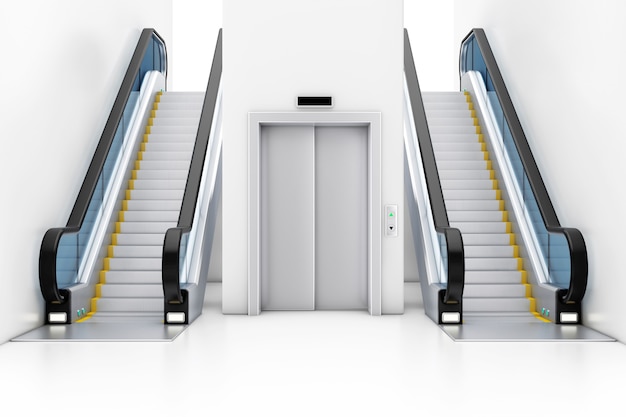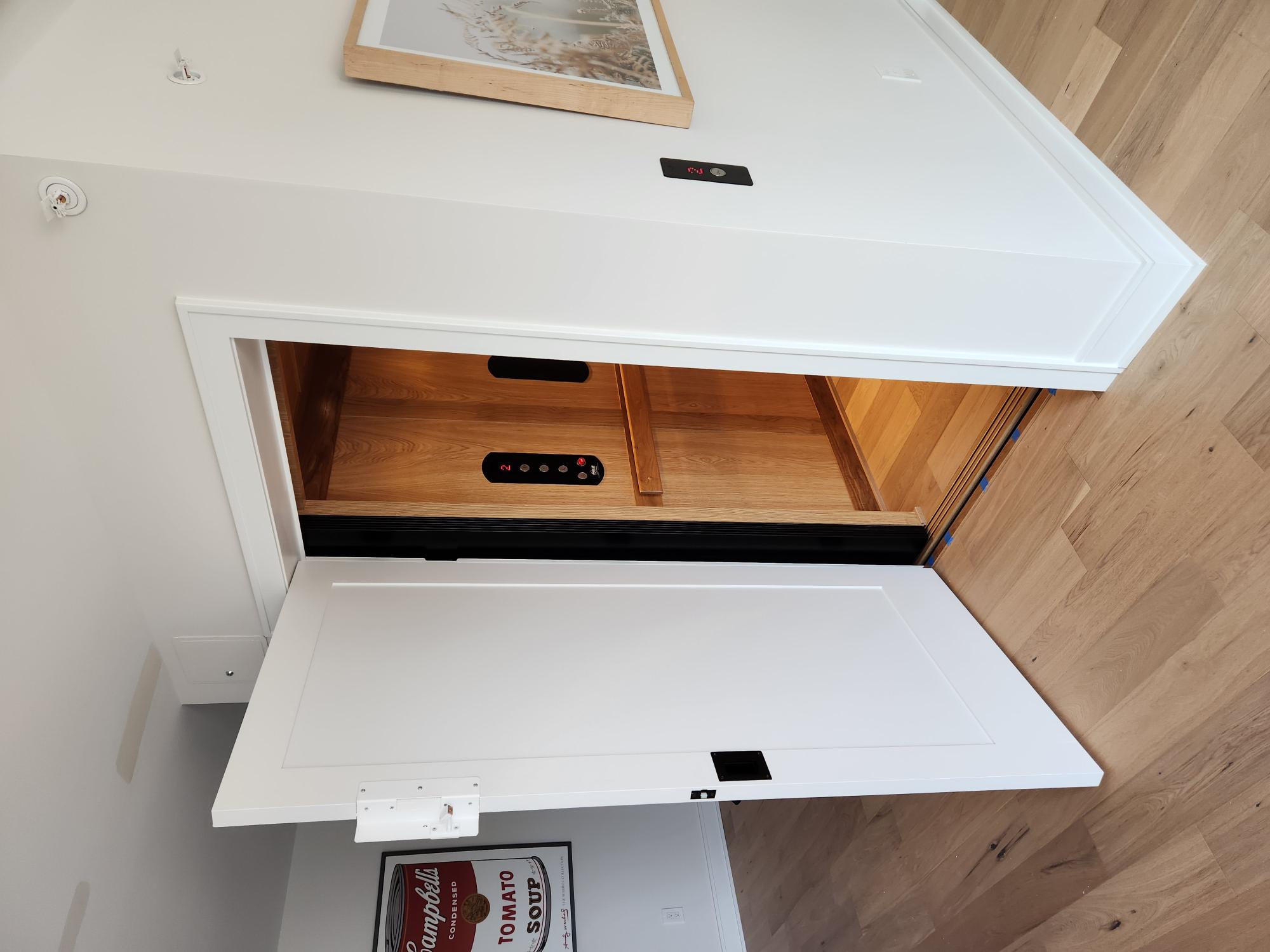London Lift Company: Providing Comprehensive Lift Solutions Throughout the Resources
London Lift Company: Providing Comprehensive Lift Solutions Throughout the Resources
Blog Article
Exploring the World of Lifts: Typical Concerns Dealt With by Various Lift Devices
As we navigate through the upright transport systems of modern-day buildings, lifts stand apart as a crucial element of our lives. Nevertheless, behind their smooth operation exists a world of detailed devices that can sometimes encounter challenges. From hydraulic lifts to traction systems and machine-room-less layouts, each lift type includes its collection of typical concerns. Recognizing these difficulties is crucial for making sure the smooth functioning of these important systems. Allow's explore the intricacies that underlie the operation of lifts and the possible issues that can develop, clarifying the elaborate internet of lift devices.
Hydraulic Elevators
Hydraulic elevators, usually chosen for low-rise buildings, use fluid pressure to manage the activity of the lift vehicle (lift repair companies). This system includes a hydraulic pump pushing oil into a cyndrical tube, causing the elevator to relocate in the wanted direction. While hydraulic elevators are recognized for their peaceful and smooth operation, they do include their very own collection of typical problems
One widespread trouble with hydraulic lifts is oil leak. The seals in the hydraulic system can wear with time, resulting in oil infiltration. This not just produces a mess however can likewise impact the elevator's performance if left unaddressed. Additionally, issues with the control system, such as defective valves or a malfunctioning pump, can cause disruptions in the lift's activity.
Regular maintenance and punctual repair services are important to make certain the smooth performance of hydraulic elevators. By dealing with these common concerns proactively, structure owners can decrease downtime and make sure the security and efficiency of their upright transportation system.
Traction Lifts
When considering vertical transport systems in buildings, one more typical type in addition to hydraulic elevators is the traction lift. Traction lifts operate making use of a system of ropes and weights that relocate the elevator automobile by grasping onto the hoist ropes. This system permits for smoother and faster upright transport contrasted to hydraulic systems.
One of the common issues encountered by grip elevators is rope wear. The consistent activity of the ropes within the grip system can result in damage gradually, potentially causing the lift to malfunction or come to be risky for use. Routine inspections and maintenance of the ropes are necessary to make sure the elevator's correct performance and security.
One more problem that grip lifts might encounter is connected to the control system. Problems with the control system can cause problems such as irregular movement, hold-ups in action times, and even complete shutdowns. Normal screening and maintenance of the control system are vital to prevent such issues and make sure the elevator's dependability.
Machine-Room-Less (MRL) Lifts

Among the vital elements of MRL lifts is the compact gearless traction machine that is mounted within the hoistway. This equipment efficiently drives the elevator cars and truck without the need for bulky devices found in typical grip elevators. Additionally, MRL lifts generally utilize a weight system to stabilize the auto, further enhancing their power efficiency.
In spite of their advantages, MRL go now lifts might face obstacles connected to maintenance and repair as a result of the confined space for tools installation. Ease of access for servicing elements within the shaft can be limited, calling for specialized training for technicians. Proper maintenance schedules and routine evaluations are important to make certain the ongoing smooth operation of MRL elevators.
Overloading and Weight Restriction Issues
Are lifts equipped why not check here to handle excess weight tons successfully and safely? Overloading and weight limit concerns are critical concerns in elevator operations. Elevator suppliers style raises with details weight capabilities to ensure traveler safety and equipment durability. Going beyond these weight limits can bring about various troubles, consisting of mechanical failings, delays, and safety threats.
When elevators are strained, it puts excessive strain on the electric motor, wires, and other components, potentially causing break downs or malfunctions. Safety and security mechanisms such as sensing units and overload sensors are in area to stop elevators from moving if they find excess weight. Furthermore, exceeding weight limits can lead to boosted power intake and wear and tear on the lift system.
To minimize overloading issues, constructing supervisors ought to prominently show weight restrictions in elevators and inform occupants on the significance of adhering to these restrictions - lift repair companies. Normal maintenance checks by certified professionals can additionally assist make certain that elevators are operating within safe weight specifications. By attending to overloading and weight limitation issues proactively, structure owners can boost lift security and effectiveness
Electrical System Failings
Surpassing weight limits in elevators can not just lead to mechanical issues yet likewise potentially add to electrical system failings within the lift framework. Electric system failures are a crucial issue in elevator procedure, as they can create unexpected shutdowns, malfunctions, and even safety hazards. One common electrical concern is the overheating of components as a result of extreme present flow created by straining the lift beyond its ability. This can cause harm to the control, you could look here electrical wiring, or motor systems, causing expensive repair work and downtime.
Additionally, power surges or fluctuations in the electrical supply can additionally interrupt the lift's operation, impacting its efficiency and safety and security. These electrical disturbances can damage sensitive lift parts such as control panels, circuit card, or sensors, resulting in system failings. Regular upkeep and examinations are essential to identify and attend to possible electric problems without delay, making certain the risk-free and effective procedure of lift systems. By sticking to weight limits and performing regular electric system checks, building proprietors can alleviate the risk of electrical failures in elevators.
Verdict

Hydraulic elevators, often chosen for low-rise structures, make use of fluid stress to manage the activity of the lift vehicle.When considering vertical transportation systems in buildings, one more typical kind apart from hydraulic lifts is the grip lift. Grip lifts operate making use of a system of ropes and counterweights that move the elevator cars and truck by clutching onto the hoist ropes. Unlike standard elevators that need a separate maker area to house the devices, MRL lifts incorporate most of the elements within the shaft, getting rid of the requirement for a specialized maker room.In final thought, elevators face typical concerns such as hydraulic breakdowns, traction system failings, and electrical system problems.
Report this page